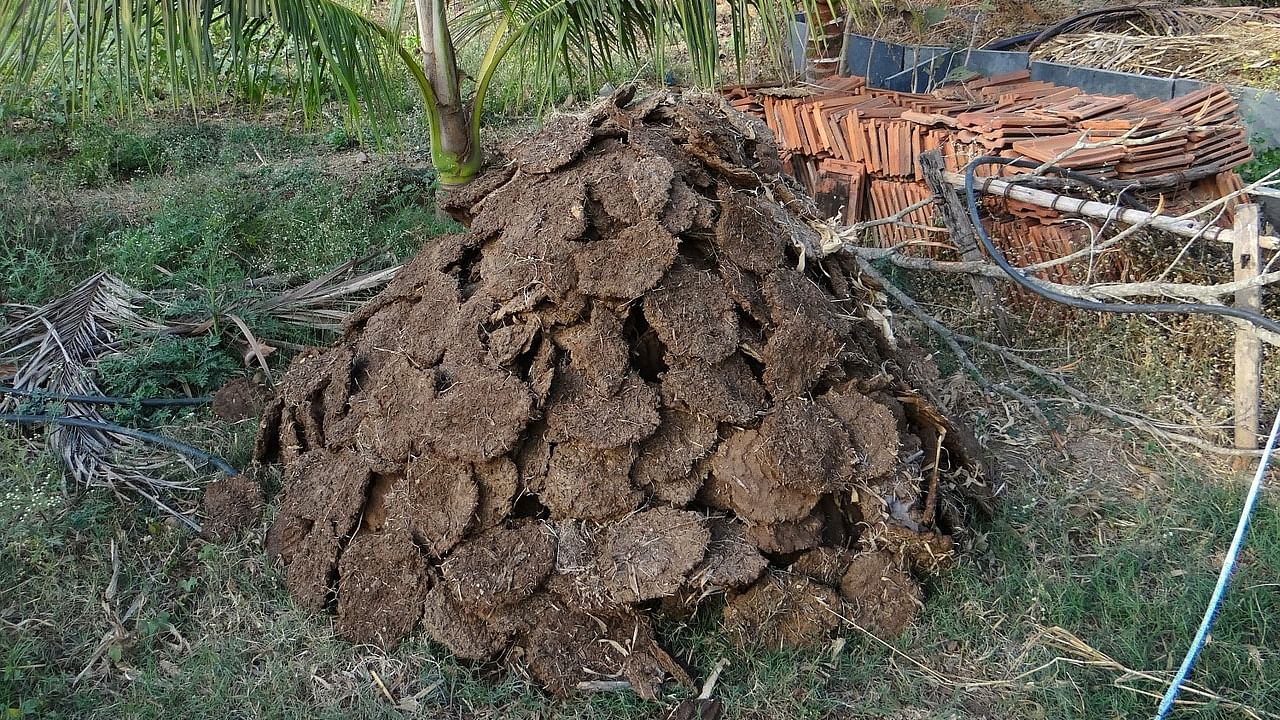
As the goal to attain 'net zero' emissions by 2050 gains global currency, climate change mitigation by trapping excess carbon dioxide in the atmosphere gains an added significance. That the soil holds three times more carbon than the atmosphere has been scientifically validated. However, unchecked soil degradation has left this potential far from being fully realised. Maintaining the capacity of the soil to act as a functional carbon sink needs to be done in tandem with the goal of emission reduction.
As a milch country, has the country valued cattle dung to gain the desired global attention? As a replenishable biological resource, dung holds soil particles together for making the landmass act like a veritable carbon sink while keeping the soil moist and productive. With 5 million tonnes of dung on offer on a daily basis, India holds rare credentials to bring dung on the global climate agenda.
While its climate-friendly credentials of trapping soil carbon are only beginning to be realised, dung has add-on benefits of being antibacterial and antifungal, with recently developed thermally-insulating paint made out of it being the latest addition to its list of virtues.
Little has been done to salvage dung that lies splintered on roads with cows foraging from the roadside dust bins. Considered an economic resource of immense cultural value, its colossal neglect has yet to catch the attention it deserves. Nothing could be more curious than such an abandonment of a resource that comes virtually free. Even the National Biogas Program, launched in 1981, to convert dung into cooking gas has done pretty little to uplift dung's sagging image as a valuable resource.
Dung is a deceptively simple raw material that has shown immense conversion value. Its nutritive worth for crops and energy value as fuel runs into billions of rupees, worthy of making the market go bullish. However, dung littered on the streets provides a grim example of how its tangible aspects as a source with multiple benefits have failed to garner political attention. Political philosopher Jeremy Waldron may have been referring to dung when he said 'things are not quite as they seem'.
No surprise, therefore, people have learnt to live with dung which is unceremoniously scattered almost everywhere. While its ritual significance amidst diverse cultural traditions is discerning, dung plastered as cakes on village walls and as dung-pyramids dotting the landscape presents a different story. However, a milk-nation has paid scant attention to dung.
The question begging attention is: Despite many virtues, why have good ideas about dung lacked systematic promotion? The only exception was when noted economist E F Schumacher had pulled it out from the near abyss in the '80s by advising the government to get gas and manure out of it, through what became known as biogas. In forty years that have gone by, not only has the ambitious program of building 12 million biogas units fallen short of the target by over 70%, but also has more dysfunctional and defunct units to its credit.
It may read like a fairy tale on unsuccessful attempts at quietude but dung has continued to act as a periscope of ideas to tease creative minds. Interestingly, like most bakery products, sun-baked dung cakes can now be ordered online. There is an energy and manure value in dung cakes! Perhaps, more attractive is the recent proposal by the Chhattisgarh government to buy dung for Rs 2 per kilo at farmers' doorsteps. The country needs to value its dung from a climate perspective, incentivising its distribution to enriching soils can be a national program.
Given the climatic urgency, there can be little denying that the country needs to be both empathetic and prepared to bring dung on the climatic agenda. Unless we alert ourselves from being lout in our dealing with dung, it will remain neglected both as a resource as well as an idea,